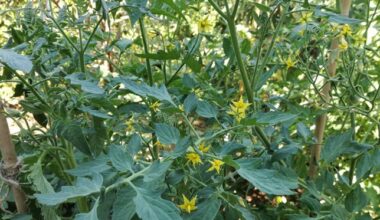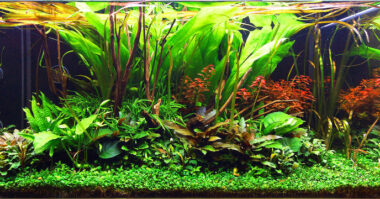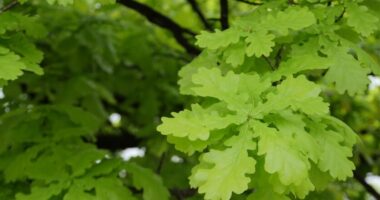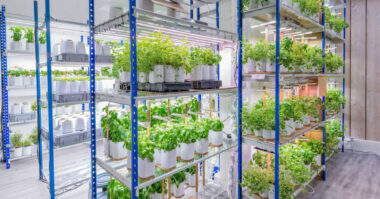Not all plants have the same life expectancy, whether perennial or perennial, annual or biennial. And even within perennials, some live only three or four years at the most, while others can survive for decades and even break longevity records.
An annual plant does not live for more than one year. Its life cycle, from germination to seed production, takes only a few months. While the life cycle of a biennial plant takes place over 2 years.
Contents
The different life cycles of plants
Flowering plants, vegetables, green plants, trees and shrubs have a defined life cycle. There are 3 life cycles for annuals, biennials and perennials.
The annuals
These plants need only one season to complete their cycle. In the same year, the gardener produces the seedlings, the plants bloom and then give their fruits and seeds, before dying in the fall or early winter.
The seeds produced by the annuals fall to the ground and some will grow the following year. This phenomenon is called spontaneous sowing.
Some known annuals :
- Basil
- Lettuce
- Beans
- Poppies
- Marigolds
- The sunflower
The biennials
Just as annuals need one year for their cycle, biennials need two years, or rather two seasons. In the first year of cultivation, these plants produce only their foliage.
The plant grows and stores reserves for season 2. The plant then produces new stems on which the flowers will appear. These flowers then give seeds. The cycle is finished and we can start again.
Some known biennials :
- The angelica
- Burdock
- The hollyhock rose
- Cauliflower
- Parsley
- The leek
Perennial plants
Perennials have the longest life expectancy – apart from natural disasters. They are so-called perennial plants, meaning that their flowering and seed production does not cause them to die like annuals and biennials.
Among this type of plant, there are three sub-categories: ephemeral, herbaceous, and woody.
Ephemeral perennials are grown as annuals/bi-annuals because they are cold. They are removed when the frost has gotten the better of them, as in the case of foxglove.
Herbaceous plants are plants that wither with the arrival of winter and reappear the following spring.
Woody plants are actually trees and shrubs that lose their foliage in the winter and regain it in the spring.
What is the lifespan of a perennial plant?
Perennials live more than two years, but they do not all have the same life expectancy. Indeed, they enter dormancy in winter (allowing them to resist adverse weather conditions) to resume growth the following spring. But they wear out over the years and sometimes disappear without warning.
A perennial can live a certain number of years (up to 60 years or more) without the intervention of the gardener, depending on the species and in optimal growing conditions.
Among the perennials, we distinguish :
- short-lived perennials (3 to 5 years)
Some perennial plants have a rather short life expectancy. Contrary to biennials, they have the capacity to bloom several years before disappearing. This is the case of perennial foxgloves, toadflax, columbines or even verbena hasta or Buenos Aires.
With a few exceptions (Example: the Digitalis ‘Glory of Roundway’ is sterile. It does not produce seeds, the multiplication is done by division only), these plants are resown alone if conditions allow it. However, it is possible and even advisable to collect the seeds, to divide or cut these plants in order to keep them in the garden.
- medium-lived perennials (5 to 20 years)
These perennials come back every year for at least 5 years. This concerns astilbes, monards, delphiniums, lamium or rudbeckia.
- long-lived perennials (20+ years)
These perennial plants have a great longevity. This is the case of daylilies, hostas, peonies, alchemilla, bergenias or even elf flowers.
What determines the lifespan of plants?
Plant growth and life span are different depending on the species and variety, related to climatic conditions and other factors. Inappropriate care will reduce the shelf life for the consumer. Post-culture treatments will not alter the genetic potential of the plant and are not designed to do so.
- Growing conditions: light, temperature, humidity, fertilization, growth regulators and crop protection play an important role in the quality of the plant.
- Post-growing conditions: Temperature, humidity, light and exposure to ethylene in particular determine the conditions under which the plant reaches the consumer. High temperatures favour floral development. The level of hygrometry plays an important role in water loss through evaporation. Significant variations in these two factors favour the development of Botrytis. The use of the most suitable post-harvest treatment for each type of potted plant is one of the key measures to be taken for plants that are resistant throughout the distribution circuit.
- Hygiene: an insufficient level of hygiene contributes to the development of micro-organisms.
- Distribution/transport time: Potted plants continue to live during transport. In order to maintain their quality, the control of climatic conditions, appropriate packaging, post-harvest treatment and fast transport are very important.
Summary
Each plant has a different lifespan, we distinguish 3 main families, the annuals, bisanuals and perennials. We explain everything in detail in this article.
But how to keep them longer? A regular and well-done maintenance of your plants will extend their life expectancy. Each plant has specific needs that the gardener must take into account: location, type of soil, watering, exposure etc. Add to this the weather parameters of your living area to protect the plants, and you should have plants that are in great shape and will live a long time – for perennials!








